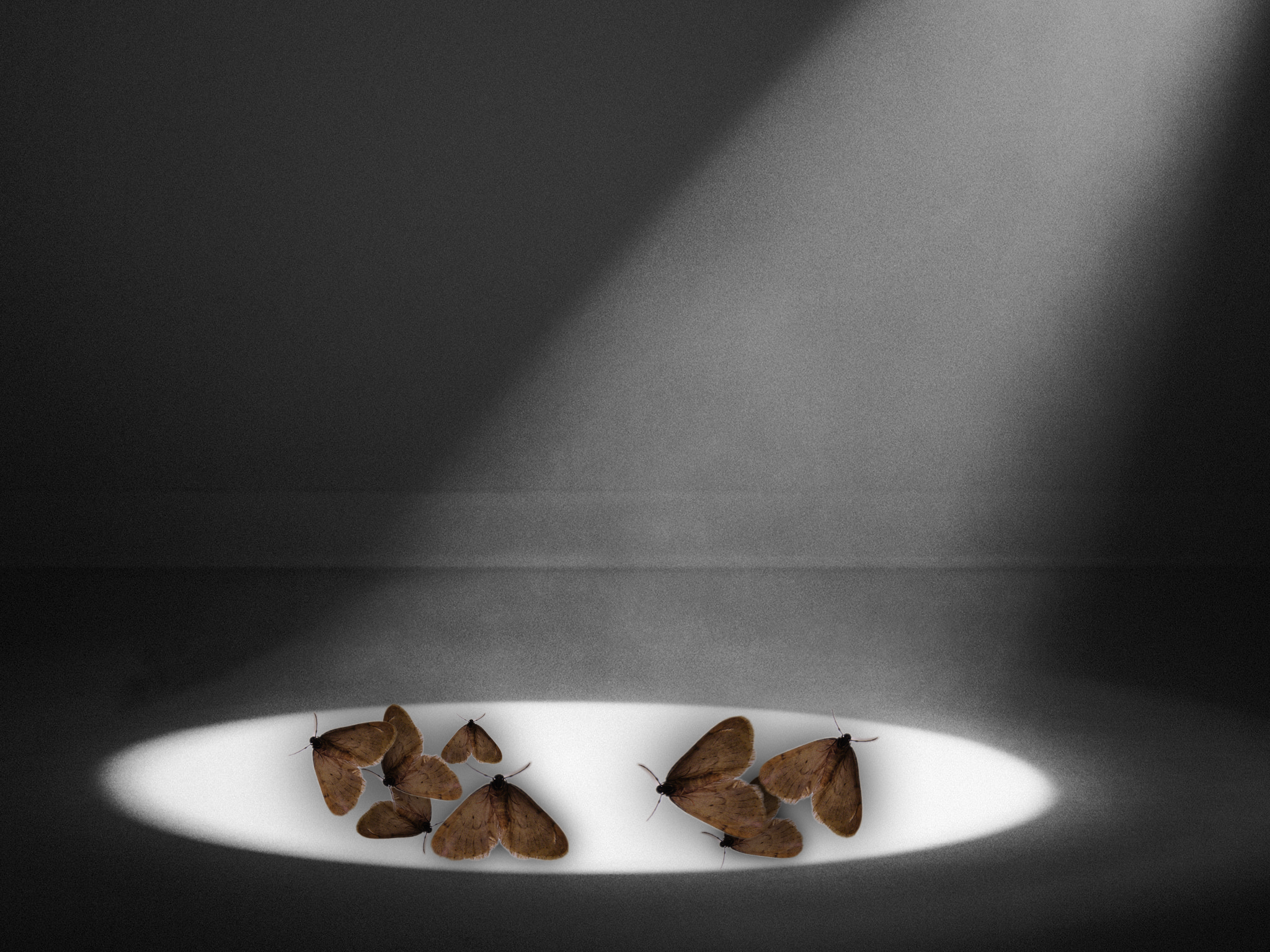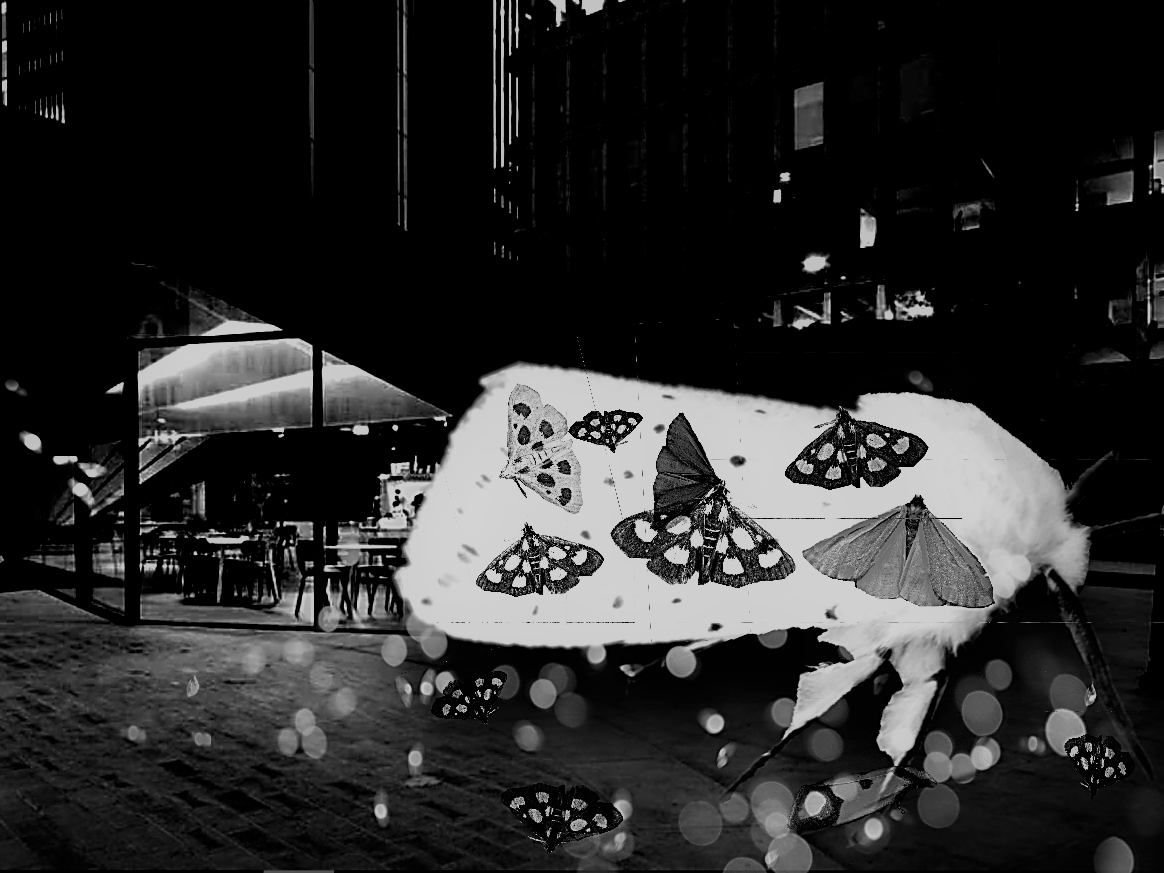Monument for Aldgate
A light source: Moths are attracted by light and since moths are primarily nocturnal creatures, they evolved to travel by the glimmer of the moon, by a method called transverse orientation. Modernity has brought some challenges to moths and one of them is the proliferation of 24/7 artificial lighting. Moths are attracted to artificial light in a way which artificially mimics transverse orientation.
However, this is an alarming phenomenon that is thought to have contributed to the sharp decline in moth numbers in Britain in the last 40 years especially. There are other factors which has contributed to the declining moth numbers such as loss of habitat and climate change. In my Monument for Aldgate, I have chosen to primarily focus on highlighting the impact of light pollution in the process of extinction of some moth species which is still a major concern for scientist and moth fans.
The project realises a physical monument (counter-monument) as well as an ephemeral participatory element as an act of public intervention and performance. several Ceramic sculptures of the White Ermine moth (Fragility represented through choice of material) and (Aesthetic value of wildlife represented by the visually attractive Ermine moth). The sculptures are purposefully placed under streetlights (Fake moons) in and around Aldgate Square to draw attention to the often-unseen plight of moths with artificial light situations in urban areas. and the life of wildlife around it. The streetlight can be any monument in an urban area such as Aldgate. The work examines the effects urbanisation has on wildlife in cities and in particular the effects of artificial lighting (Light pollution) on the 24-hour cycle of wildlife.
Figure: Large ceramic sculpture, ceramic paint and light source. Ermine 2021.
Digital experimentation on placement.


